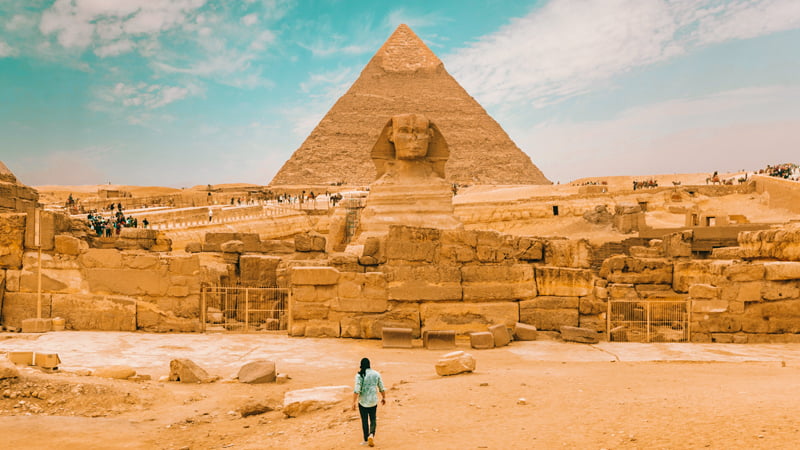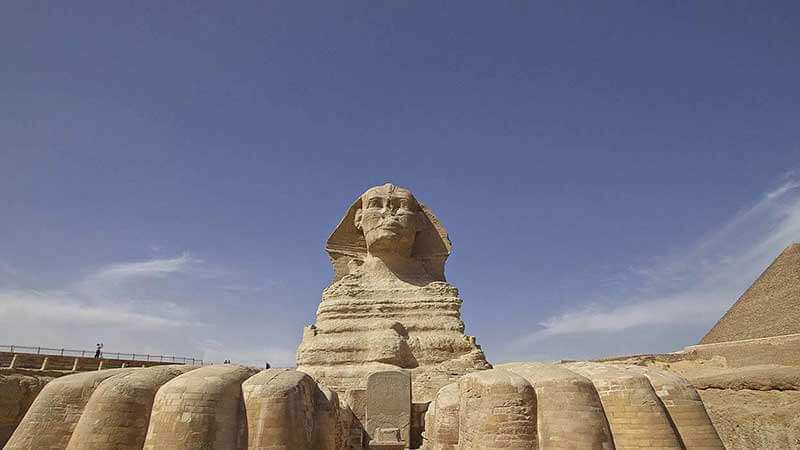The Great Sphinx of Giza is an awe-inspiring testament to ancient Egyptian craftsmanship and ingenuity. Situated on the Giza Plateau, adjacent to the famous pyramids, this enigmatic monument has captivated people’s imaginations from all corners of the globe. This article will delve into the rich history, intriguing theories, and remarkable facts that make the Great Sphinx an enduring symbol of Egypt’s majestic past.
The Great Sphinx of Giza: An Iconic Marvel
The Great Sphinx of Giza is a colossal limestone statue of a mythical creature with a lion’s body and a human’s head. It is believed to represent Pharaoh Khafre, who ruled during Egypt’s Old Kingdom in the 26th century BCE. Standing at an impressive 66 feet in height and 240 feet in length, the Sphinx remains the most giant monolithic statue in the world.
Unraveling the Origins of the Sphinx
The origins of the Great Sphinx have been a subject of intense debate among historians and archaeologists. Various theories abound, with some suggesting that it was constructed during the reign of Khafre, while others propose a much older date, predating the pyramids themselves. Recent research and evidence hint at the possibility of a “re-carving” hypothesis, where an older monument was modified to create the great Sphinx of Giza we see today.

Theories and Speculations
The Solar Symbolism Theory
Some experts believe the Sphinx is an astronomical marker aligned with the rising sun on the vernal equinox. Its position may have served as a symbolic representation of the sun god Ra, signifying eternal life and divine power.
The Guardian of the Necropolis
The Sphinx’s location facing the pyramids has led to speculation that it served as a guardian, protecting the tombs of the pharaohs and the treasures buried within.
The Missing Nose Mystery
The Sphinx’s missing nose has been the subject of curiosity and numerous theories. While some attribute the damage to erosion or an intentional act, the truth remains mysterious.
The Secrets Encoded in the Sphinx
The Great Sphinx has long been associated with hidden chambers and passageways. Theories suggest that undiscovered cavities may lie beneath the monument, potentially housing ancient artifacts or even the long-lost knowledge of a bygone civilization. Modern technologies like ground-penetrating radar have unveiled the secrets concealed within.
Restoration Efforts and Preservation
Over the centuries, the Great Sphinx has faced erosion and damage due to natural elements and human intervention. Preservation efforts have been ongoing, with conservationists and archaeologists striving to maintain the statue’s structural integrity and historical significance. Therapeutic measures and protective barriers have been implemented to safeguard this cultural treasure for future generations.

Conclusion
The Great Sphinx of Giza remains an enigmatic marvel, embodying the mysteries of ancient Egypt and the ingenuity of its people. As visitors and researchers continue to explore its secrets, the Sphinx stands as a timeless symbol of human achievement and the pursuit of knowledge. Its allure and intrigue will undoubtedly endure for generations to come, preserving the captivating history of Egypt’s fascinating past.




